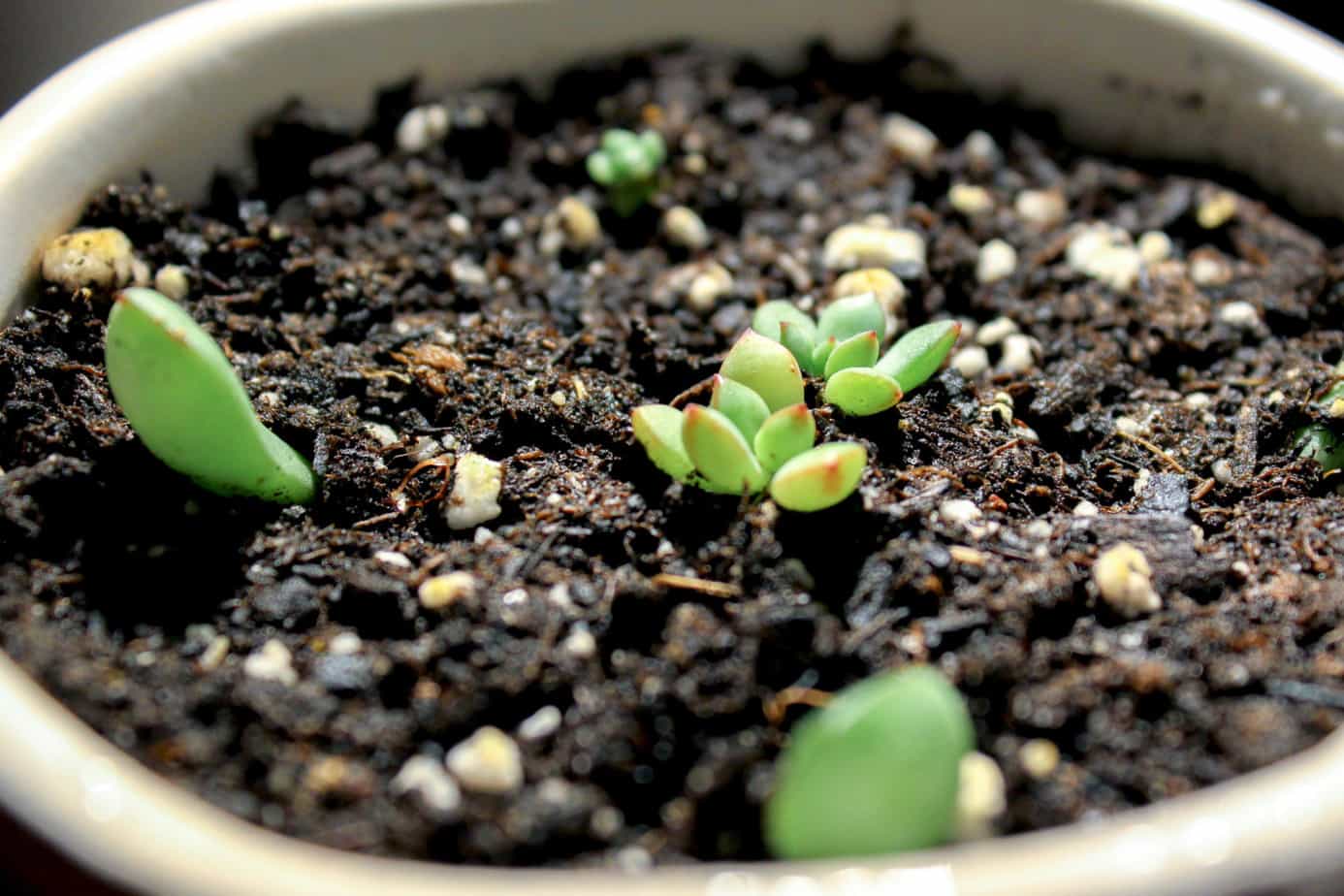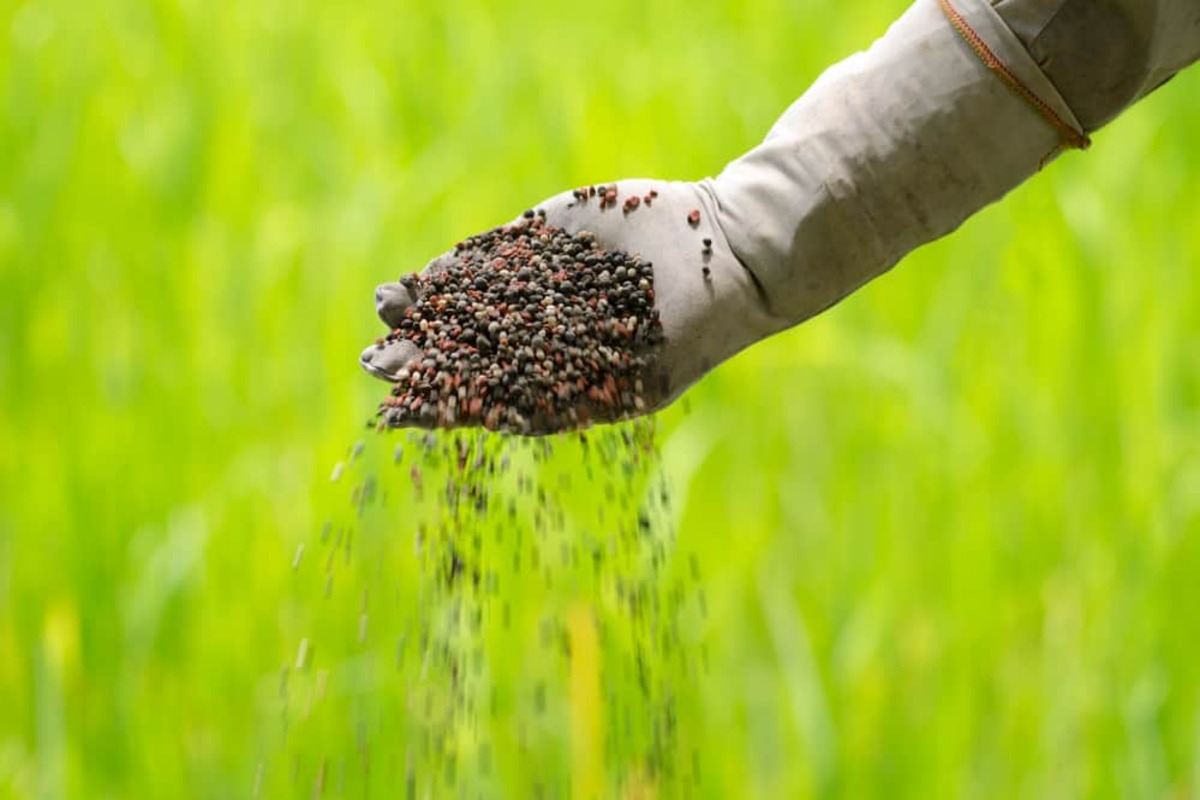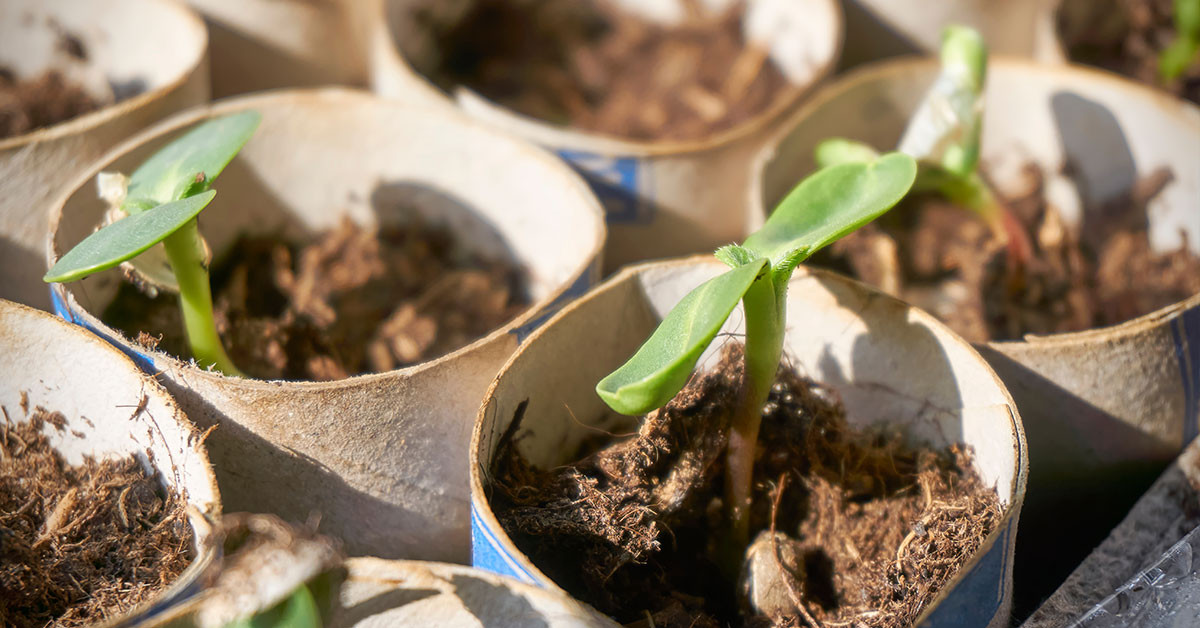Home>Gardening Basics>Getting Started>How Long Does It Take Ammonia To Kill Weeds


Getting Started
How Long Does It Take Ammonia To Kill Weeds
Modified: January 22, 2024
Discover how long it takes ammonia to effectively eliminate weeds. Learn essential tips and steps for getting started with ammonia-based weed control.
(Many of the links in this article redirect to a specific reviewed product. Your purchase of these products through affiliate links helps to generate commission for Chicagolandgardening.com, at no extra cost. Learn more)
Table of Contents
Introduction
Welcome to this comprehensive guide on using ammonia as a weed killer and discovering how long it takes for ammonia to kill weeds. Weeds can be a nuisance, invading our lawns, gardens, and other outdoor spaces, competing with our desirable plants for sunlight, water, and nutrients. While there are various weed control methods available, ammonia is a popular and cost-effective option.
Ammonia, also known as ammonium hydroxide, is a chemical compound composed of nitrogen and hydrogen. It is commonly used in cleaning products, fertilizers, and even as a food additive. Due to its strong alkaline properties, ammonia can be an effective weed killer when used properly.
Using ammonia as a weed killer offers several advantages. It is readily available, affordable, and easy to use. Additionally, it can be used on different types of weeds and in various outdoor settings, such as gardens, lawns, sidewalks, and driveways. However, it is essential to understand the factors that can affect the effectiveness of ammonia as a weed killer and the potential risks associated with its use.
In this guide, we will explore the factors that influence the killing time of ammonia on weeds, as well as the safety precautions you should take when using it. Whether you are a novice gardener or an experienced homeowner, this article will provide you with the information you need to effectively and safely use ammonia as a weed killer.
What is Ammonia?
Ammonia is a widely used chemical compound that consists of three hydrogen atoms bonded to one nitrogen atom. Its chemical formula is NH3. It is a colorless gas with a pungent odor and can be found in nature, as well as being artificially produced for various purposes.
In its natural state, ammonia is abundant in the environment, including soil, water, and even the atmosphere. It is an essential component in the nitrogen cycle, playing a vital role in the conversion of organic nitrogen compounds into usable forms for plants and other organisms. In industry, ammonia is produced through the Haber process, which involves combining hydrogen gas and nitrogen gas under high pressure and temperature.
Ammonia has a range of uses across different fields. One of its most common uses is as a cleaning agent. Due to its alkaline nature, ammonia is effective in cutting through grease, grime, and stubborn stains. It is commonly found in household cleaning products, such as window cleaners, floor cleaners, and even some laundry detergents.
Ammonia is also widely used in agriculture as a fertilizer. As a source of nitrogen, it provides essential nutrients for plant growth. Farmers and gardeners often apply ammonia-based fertilizers to improve soil fertility, promote healthy plant development, and enhance crop yields.
Beyond its cleaning and agricultural applications, ammonia is utilized in a range of industrial processes. It is a key component in the production of plastics, synthetic fibers, pharmaceuticals, and refrigerants. Additionally, it is used in water treatment facilities to remove contaminants and in the manufacturing of explosives.
While ammonia has numerous practical uses, it is important to handle it with caution. The concentrated form of ammonia can be harmful and potentially toxic if ingested or inhaled. It is essential to follow safety guidelines and handle ammonia-based products responsibly.
Using Ammonia as a Weed Killer
Ammonia can be an effective and affordable option for tackling unwanted weeds in your outdoor spaces. When used correctly, it can help control and eliminate weeds without the need for harsh chemicals or expensive herbicides. Here are some steps to follow when using ammonia as a weed killer:
- Choose the right concentration: Ammonia is typically sold in different concentrations, ranging from 5% to 10%. For weed control purposes, a 10% concentration is often recommended. This higher concentration helps ensure maximum effectiveness in killing weeds.
- Mix ammonia with water: To use ammonia as a weed killer, you need to dilute it with water. The general ratio is one part ammonia to ten parts water. For example, if you have a gallon of water, you should mix it with roughly 13 ounces of ammonia. Be sure to follow the mixing instructions on the ammonia product label.
- Choose a suitable application method: There are different application methods you can use to apply ammonia to the weeds. One common method is to spray the ammonia solution directly onto the leaves and stems of the weeds using a spray bottle or garden sprayer. Another method is to pour the solution directly at the base of the weeds.
- Target the weeds: When applying the ammonia solution, make sure to focus on the weeds you want to eliminate. Take care to avoid spraying or pouring the solution onto desirable plants as ammonia can damage or kill them as well.
- Repeat if necessary: Depending on the type and size of the weeds, it may take multiple applications to effectively kill them. For smaller weeds, one application may be sufficient, while larger, more established weeds may require repeat treatments.
- Timing is key: It is generally recommended to apply ammonia as a weed killer on a warm, sunny day. The sunlight and warmth can help enhance the effectiveness of the ammonia in killing the weeds. Avoid applying ammonia if rain is expected within the next 24 hours as it can dilute the solution and reduce its efficacy.
Remember, ammonia is a non-selective weed killer, which means it can also harm or kill desirable plants if not used with caution. Take care to avoid contact with desirable plants and apply the solution directly to the weeds. Additionally, it is important to consider local regulations and restrictions on the use of ammonia as a weed killer in your area.
Factors Affecting the Killing Time of Ammonia
While ammonia can be an effective weed killer, the time it takes for it to kill weeds can vary depending on several factors. Understanding these factors can help you achieve the desired results more effectively. Here are some key factors that can influence the killing time of ammonia:
- Weed type: Different types of weeds have varying levels of susceptibility to ammonia. Some weeds may be more resistant and require longer exposure to ammonia to be effectively killed. Broadleaf weeds, such as dandelions and clover, are generally more susceptible to ammonia than grassy weeds.
- Weed size and maturity: The size and maturity of the weeds can also affect the killing time of ammonia. Smaller, younger weeds are generally easier to control and may be killed more quickly compared to larger, more established weeds. It may take multiple applications of ammonia to fully eliminate larger weeds.
- Concentration of ammonia: The concentration of ammonia in the solution can impact its effectiveness in killing weeds. A higher concentration of ammonia, such as a 10% solution, is generally more potent and can lead to quicker weed control. However, it is important to follow the product instructions and avoid using excessively high concentrations that could harm desirable plants or cause environmental damage.
- Application method: The method through which the ammonia is applied to the weeds can also influence the killing time. Spraying the ammonia solution directly onto the leaves and stems of the weeds ensures better coverage and increased absorption, leading to faster results. Pouring the solution at the base of the weeds may take a bit longer to show effects.
- Environmental conditions: The environmental conditions, such as temperature and sunlight, can impact the effectiveness of ammonia as a weed killer. Warmer temperatures and ample sunlight can enhance the efficacy of ammonia, while cooler temperatures and lack of sunlight may slow down the killing process. It is best to apply ammonia on a warm, sunny day for optimal results.
- Repeat treatments: Depending on the resilience of the weeds and the desired level of weed control, multiple applications of ammonia may be needed. Some weeds may require repeat treatments to completely eliminate them. It is important to follow the recommended application schedule and allow sufficient time between treatments for the ammonia to take effect.
Keep in mind that these factors are interrelated, and the effectiveness of ammonia as a weed killer may vary depending on the specific combination of these factors. Patience and consistency are key when using ammonia to control weeds, as the killing time can range from a few days to several weeks. Monitoring the progress and adjusting the treatment accordingly can help maximize the efficiency of ammonia as a weed killer.
How Long Does It Take for Ammonia to Kill Weeds?
The time it takes for ammonia to kill weeds can vary depending on several factors, as discussed earlier. It’s important to note that ammonia is not an instant weed killer and typically requires some time to take effect. The killing time can range from a few days to several weeks, depending on the weed type, size, concentration of ammonia, application method, and environmental conditions.
For smaller and younger weeds, you may start noticing visible symptoms of damage within a few days of applying ammonia. These symptoms can include wilting, yellowing, or browning of the leaves and stems. Continued application of ammonia can lead to further deterioration of the weed’s health, eventually causing it to die off completely.
However, larger and more established weeds may require repeat applications and more time to be effectively eliminated. These weeds have a more developed root system, making it harder for the ammonia to completely penetrate and reach the root to kill the weed. You may need to apply ammonia multiple times, spaced out over a few weeks, to ensure complete control.
The concentration of ammonia used can also impact the killing time. A higher concentration, such as a 10% solution, is generally more potent and can expedite the killing process. However, it’s crucial to follow the instructions on the product label and avoid using excessive concentrations that could harm desirable plants or cause environmental damage.
Environmental conditions also play a role in the killing time of ammonia. Warmer temperatures and ample sunlight help enhance the effectiveness of ammonia as a weed killer. On the other hand, cooler temperatures and lack of sunlight may slow down the weed-killing process. Therefore, it’s recommended to apply ammonia on a warm, sunny day for optimal results.
Monitoring the progress of the treated weeds is important when using ammonia as a weed killer. You may need to adjust the treatment schedule or apply repeat treatments to achieve the desired level of weed control. Remember to avoid spraying or pouring ammonia onto desirable plants, as it can also harm or kill them.
Ultimately, the killing time of ammonia may vary based on the specific combination of factors mentioned earlier. Patience and consistent application are key when using ammonia as a weed killer. By understanding these factors and closely monitoring the treated weeds, you can effectively control and eliminate weeds using ammonia.
Safety Precautions when Using Ammonia as a Weed Killer
While ammonia can be an effective weed killer, it is important to prioritize safety when using it. Ammonia is a powerful chemical compound and can be potentially hazardous if not handled properly. Here are some essential safety precautions to keep in mind:
- Wear protective clothing and gear: When working with ammonia, it is crucial to protect yourself by wearing appropriate clothing and gear. This includes long sleeves, long pants, gloves, closed-toe shoes, and safety goggles. These protective measures will help prevent direct contact with the skin and eyes.
- Work in a well-ventilated area: Ammonia can release strong fumes that can be irritating and potentially harmful if inhaled in high concentrations. Always work in a well-ventilated area, such as outdoors, or ensure proper airflow if applying ammonia indoors. Avoid working in confined spaces where fumes can collect.
- Avoid ingestion and inhalation: Ammonia is toxic if ingested or inhaled. Be cautious not to consume any ammonia-based products, and take care to avoid breathing in the fumes directly. If accidental ingestion or inhalation occurs, seek medical attention immediately.
- Keep ammonia away from children and pets: Store ammonia-based products in a secure location, out of reach of children and pets. Accidental exposure to ammonia can be harmful to their health. Additionally, avoid applying ammonia near areas where children and pets frequently play.
- Do not mix ammonia with other chemicals: Mixing ammonia with other cleaning agents or chemicals can produce harmful fumes or reactions. Always use ammonia as instructed and avoid combining it with other substances.
- Dispose of ammonia properly: Follow local regulations and guidelines for the proper disposal of ammonia-based products. Do not pour unused ammonia down drains or dispose of it in household trash. Contact your local waste management facility for proper disposal methods.
- Read and follow product instructions: Each ammonia product may have specific instructions and precautions listed on the label. It is important to read and follow these instructions carefully to ensure safe and effective use.
By following these safety precautions, you can mitigate potential risks associated with using ammonia as a weed killer and protect yourself, others, and the environment. If you have any concerns or questions regarding the safe use of ammonia, consult the product manufacturer or seek advice from a professional before proceeding.
Conclusion
Ammonia can be a practical and cost-effective option for controlling and eliminating weeds in your outdoor spaces. By understanding how to use ammonia effectively, along with the factors that impact its killing time, you can achieve successful results in weed control. However, it’s important to prioritize safety when using ammonia as a weed killer.
Ammonia, a chemical compound composed of nitrogen and hydrogen, is commonly found in cleaning products, fertilizers, and other industrial applications. Its alkaline properties make it an effective option for killing weeds when used correctly.
When using ammonia as a weed killer, it is important to choose the right concentration, mix it with water, and apply it using suitable methods. Factors such as the type and size of weeds, the concentration of ammonia, application method, and environmental conditions can influence the killing time of ammonia on weeds. Monitoring the progress and adjusting the treatment accordingly is key to achieving desired weed control.
It is crucial to prioritize safety when working with ammonia. Wearing protective clothing and gear, working in a well-ventilated area, and avoiding ingestion or inhalation are essential. Additionally, keep ammonia away from children and pets, never mix it with other chemicals, and dispose of it properly.
By following these guidelines and safety precautions, you can effectively and safely use ammonia as a weed killer. Remember to always read and follow the instructions provided by the product manufacturer and comply with local regulations regarding the use and disposal of ammonia.
With its affordability and versatility, ammonia can be a valuable tool in your weed control arsenal. By implementing these practices, you can maintain a beautiful and weed-free outdoor space without relying on harsh chemicals or expensive herbicides.





